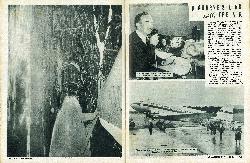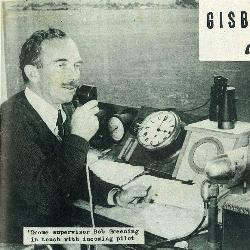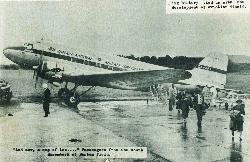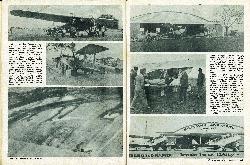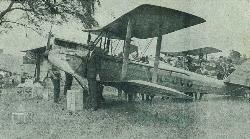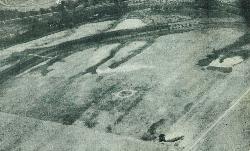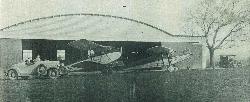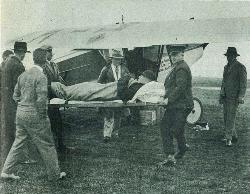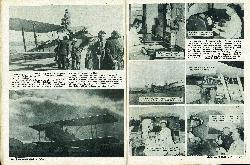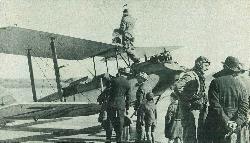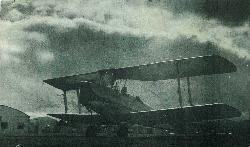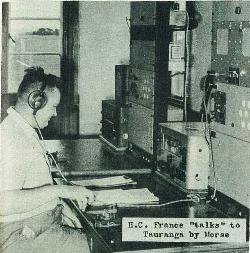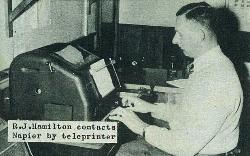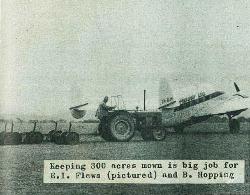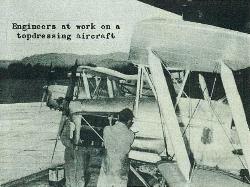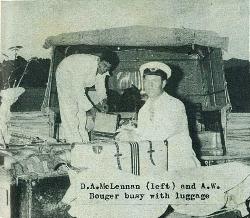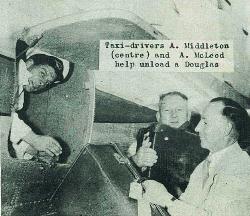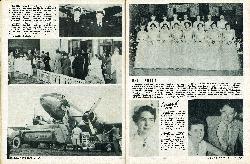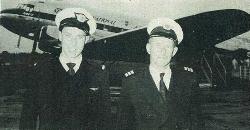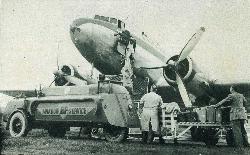41
Gisborne's Link with The Air
Darton Field, a 100-acre paddock only 25 years ago, is today one of Gisborne's most vital links with the outside world. N.A.C. planes fly over 27,000 people and 1,000,000 lbs of freight in and out of the 'drome every year. As the base for a growing fleet of topdressing aircraft it plays an important part in the farming economy of the district.
For this giant-stride development Poverty Bay owes much to the far-sighted few who first began the search for a suitable site in the late 1920's. Their legacy is an air field clear of the hills, with an open approach from the sea, an enviable fine-weather record and quick access to the heart of the city.
Named after the late Mr George Darton, former engineer of the Gisborne Borough Council, the 'drome has an absorbing history tied up with the development of aviation itself.
42
Visits by two famous aviators, Sir Charles Kingsford-Smith and Oscar Garden, were big moments in the early life of the airfield. "Smithy's" Southern Cross, pictured above, was the first overseas aircraft to land on Barton Field. Garden's plane, is shown about to be refuelled during its stay here.
The picture below, from a photograph taken in February, 1931, shows the original hangar in the south-west corner of what was known as "Machell's Paddock". The first 100 acres of the airfield was purchased from the estate of the late Mr J. Machell.
43
Urgent medical flights included a trip to Auckland with the late Archdeacon Packe, pictured right on a stretcher.
The company operated on a non-schedule basis until late 1932. Schedule flights began in 1934 when the original share-holders joined with others to form East Coast Airways. The company used the two Dragon aircraft pictured below.
Union Airways, later absorbed by N.A.C., began operating in 1936.
The enterprise of Messrs G. A. Nicholls, A. B. Williams, and E. R. Black led to the setting up in 1931 of Gisborne Air Transport Ltd. Mr Nicholls, a bomber pilot in World War I, had already played a leading part in the search for a 'drome site.
With a DH 60 Cabin Moth and a Be Soutter monoplane the company established the district's first air service.
44
Aero clubs have played a big role in the progress of flying throughout New Zealand. Gisborne is no exception.
The first flights in and out of the district were in aircraft like the H.B. Aero Club Tiger Moth pictured above as Mr Nicholls and Captain T. W. White prepare to leave on a business trip to Wellington in 1929.
Today the Gisborne Aero Club has two Tiger Moths, an Auster and, for special flights, the use of Ken Bloomfield's Dragon Rapids. The club hopes to provide: the East Coast with a service if suitable fields can be provided. Below, a Moth takes off on a Sunday morning flight.
45
A busy airfield means a lot of busy people. Scores of workers in scores of different jobs help to keep the organisation running smoothly.
Darton Field met its greatest challenge with flying colours when in January 1954, the Queen and the Duke of Edinburgh landed there. And as the first place on which the Queen set foot in Poverty Bay, the aerodrome had gained a new chapter in a story already full of achievement.
H. C. France "talks" to Tauranga by Morse
R. J. Hamilton contacts Napier by teleprinter
Keeping 300 acres mown is big job for E. I. Flaws (pictured) and B. Hopping
Engineers at work on a topdressing aircraft
D. A. McLennan and A. W. Bouger busy with luggage
Taxi-drivers A. Middleton (centre) and A. McLeod help unload a Douglas
46
Men like these National Airways pilots, pictured right, maintain the high standard of safety and efficiency which had won the complete confidence of the public.
The corporation has an accident-free record for flights in and out of Gisborne.
The busy airport scene below is typical of almost any afternoon at Darton Field as passengers arrive or prepare to embark.
Douglas DC3s, like that pictured bottom of page during refuelling, have been using the field since 1952. They replaced Lodestars which were introduced on the Gisborne run in 1948. Earlier flights were with Lockheed Electras.


